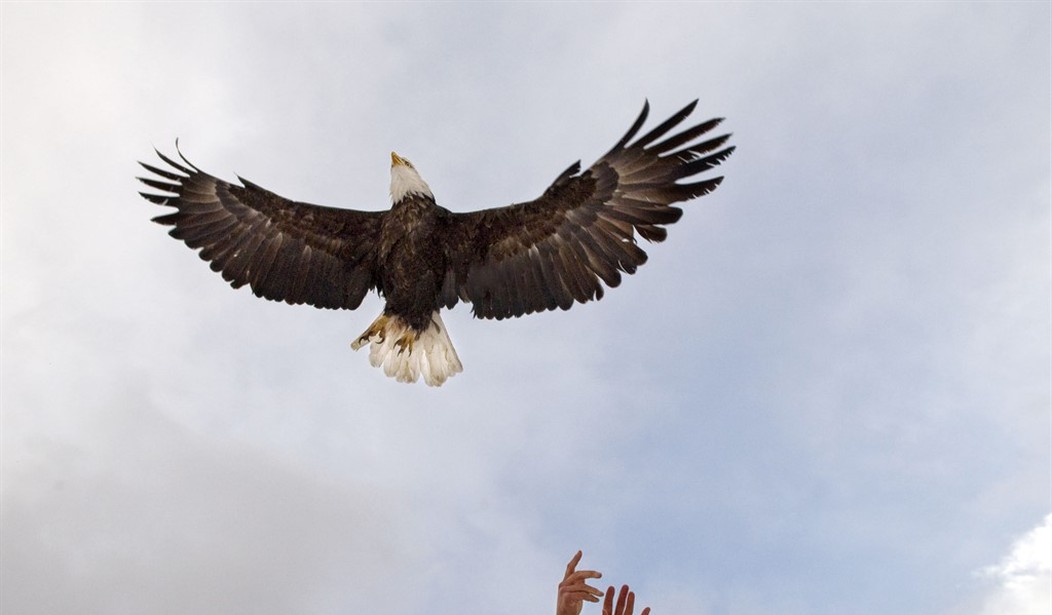“The founding fathers made an appropriate choice when they selected the bald eagle as the emblem of our nation. The fierce beauty and proud independence of this bird aptly symbolizes the strength and freedom of America.” JFK 1961
The last seven years may have diluted that patriotic sentiment. Yet, square our national veneration of the bald eagle with a federal rule to allow the rotor blades of wind turbines to butcher 4,200 bald eagles per year for thirty years—four times the previous limit. The U.S. Fish and Wildlife Service (Service), an agency legally bound to protect wildlife and with no jurisdiction over energy, stated that the rule’s purpose was to help spur more renewable installations.
The bald eagle is probably the most honored and protected wildlife species in U.S. history. Initially protected in 1940 under the Bald Eagle Protection Act, the majestic bird was one of the first species listed under the Endangered Species Act in the late 1960s. When first listed, perhaps only four hundred breeding pairs existed. When officially delisted in 2007, the bald eagle population had increased to 10,000 pairs that mate for life. The noble bird is still protected by the Bald and Golden Eagle Protection Act.
With the new rule, the Service apparently aims to legitimize what has become politically selective enforcement of wildlife protection laws under the Obama administration. The feds have largely given renewables energy facilities a pass on bird and other wildlife kills while repeatedly trying to nail oil and gas operations with criminal prosecution and onerous fines for the inadvertent kills of a few common birds. In 2012, a federal judge in North Dakota threw out the Department of Justice’s criminal indictments of three oil and gas companies on the grounds that the law was too vague to criminalize basic commercial activity.
Recommended
Various industrial operations including wind turbines inadvertently kill hundreds of thousands of birds every year. Feral and domestic cats may kill five hundred million birds. There is something heinous, however, about authorizing the slaughter of over 4,000 bald eagles every year for thirty years to promote renewable energy—a diffused, parasitic form of energy, wholly dependent on subsidy- at the expense of our redoubtable bald eagle. Emblazoned on the Great Seal of the United States adopted in 1887 and only delisted from the Endangered Species Act in 2007, does not the American Bald Eagle deserve a pride of place among protected wildlife in our country?
On the other hand, disregard for our national symbol is consistent with our president’s policy to diminish the strength and clout of the United States. If renewable energy systems on a mass scale could “save the one planet we have,” then farewell to the living symbol of our country. It’s becoming increasingly undeniable, however, that renewables are not capable of providing the energy services on which our society is utterly dependent and cannot displace 80–90 percent of our fossil fueled–energy supply without creating extreme energy scarcity. Even Google’s green engineers regrettably concluded that existing renewables are a “false hope.” As a German newspaper put it, renewables are a “blunder with ugly consequences.” And the most ugly impact is the unimaginable scale on which the planned renewable build-out would damage and disfigure the environment.
Replacing fossil fuel–based electric generation with wind and solar generation requires massive amounts of land and the destruction of natural habitats in return for less energy at a higher price. In contrast, fossil fuels, whose density and reliability far exceed those of renewable energy fuels, have reduced the size of man’s footprint on the earth, while technology has greatly reduced polluting emissions from the combustion of fossil fuels.
Wind and sunshine may be free, but the many indirect costs of concentrating the diffuse and variable flows from these energy sources drives the cost per unit of electricity far higher than fossil fuel generation. For solar to meet total U.S. electric demand, ten thousand square miles would have to be given over to solar panels.
Current renewable systems require massive material use. For example, an average wind system uses 460 metric tons of steel and 870 cubic meters of concrete per megawatt of electricity to anchor the turbines. In contrast, a natural gas combined cycle plant of comparable capacity uses about three metric tons of steel and twenty-seven cubic meters of concrete. Although likely regarded as punishable heresy by the climate crusaders, mankind’s carbon footprint has shrunk the physical footprint of human societies on the natural world.

























Join the conversation as a VIP Member